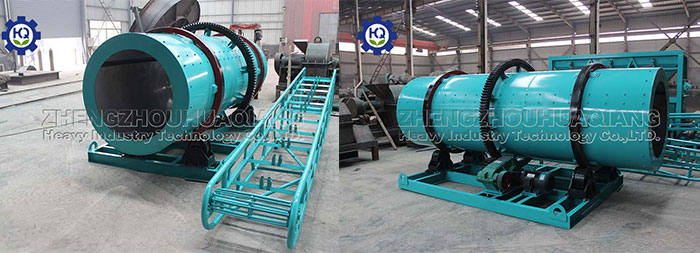
Environmental protection and energy saving drum granulator, steam, gas ammonia or phosphoric acid or nitrogen solution, phosphoric ammonia slurry, heavy calcium slurry are added to the machine, and the chemical reaction and heating of organic fertilizer and compound fertilizer are completed in the cylinder. Granulation process; or cold granulation process of organic fertilizer and compound fertilizer supplemented with a small amount of water. The material to be granulated is passed through the rotating movement of the cylinder to produce a rolling rotation inside the cylinder, and it is agglomerated into balls under a certain humidity and temperature to complete the ball making process.
Environmental protection and energy saving drum fertilizer granulator machine features:
1. The ball formation rate is up to 70%, there is a small amount of returned material, and the returned material has a small particle size, which can be re-granulated;
2. Use an induced draft fan to introduce hot air into the cylinder to increase the temperature of the material, so that the material has a low moisture content after being balled, and the drying efficiency is improved;
3. high-temperature resistant inner lining, the raw material is not easy to stick to the cylinder, and has the effect of anti-corrosion and heat preservation;
4. Large output, low power consumption and low maintenance cost.
The working principle of the energy-saving and environmentally friendly drum granulator machine for fertilizer is that the belt and pulley are driven by the main motor, which is transmitted to the driving shaft through the reducer, and the split gear installed on the driving shaft is toothed with the large ring gear fixed on the body Together, work towards each other. The material is added from the feeding end through the inside of the cylinder. Through the function of the internal structure of the cylinder, it is made into particles, and then flows out through the discharge port. Due to the continuous entry of materials and the continuous rotation of the granulator, mass production can be realized.
